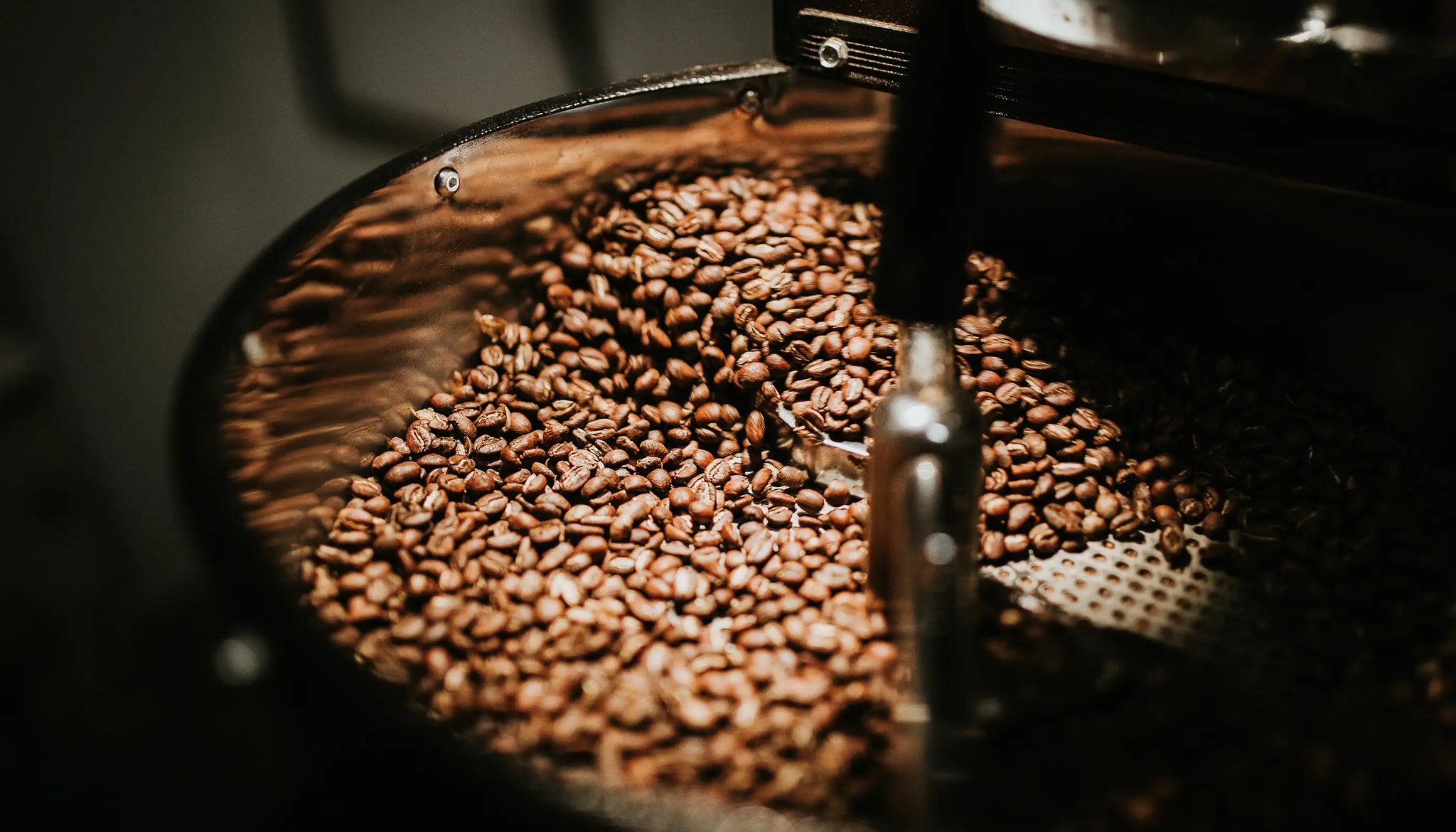Understanding Coffee Beans: the Trip From Coffee to Blended Coffee Beans

The Origins of Coffee: A Global Viewpoint
While you might believe of coffee as a modern-day staple, its origins map back centuries, intertwining with cultures across the world. The story starts in Ethiopia, where legend claims a goat herdsman named Kaldi found the stimulating effects of coffee beans after discovering his goats frolicking vigorously after consuming them.
As trade paths increased, coffee made its way to Europe in the 17th century, swiftly gaining popularity. Each culture added its one-of-a-kind spin to coffee prep work, improving its background.
Cultivation and Harvesting of Coffee Beans
As coffee's trip evolved, the emphasis moved to the farming and harvesting of specific bean ranges, especially those made use of for coffee. You'll find that coffee beans often come from Arabica or Robusta plants, each offering unique flavors. The perfect growing conditions include high altitudes and rich, well-drained dirt, which boost the beans' high quality.
During the harvest, selecting techniques differ. Timing is important; you want to harvest when the cherries get to peak perfection for maximum taste.
Once collected, the beans are gotten ready for processing, which is crucial in identifying their last taste. Understanding the growing and gathering processes offers you understanding right into what enters into your favored coffee, improving your appreciation for each mug.
Processing Techniques: From Cherry to Bean
Since you've learned about collecting espresso beans, let's discover how those cherries transform into the coffee beans you like. You'll see just how various harvesting techniques effect taste, complied with by the crucial actions of fermentation and drying. We'll damage down the milling and grading procedure that identifies your coffee's quality.
Harvesting Techniques Clarified
When it pertains to coffee, comprehending harvesting techniques is essential, since they directly impact the flavor and top quality of the beans you delight in. There are two key methods: careful picking and strip picking. Selective choosing includes hand-picking just ripe cherries, ensuring you get the finest quality beans. This approach usually causes a richer flavor profile, though it's even more labor-intensive. On the other hand, strip selecting methods harvesting all cherries at as soon as, despite ripeness. While it's quicker and less costly, this can result in a mix of flavors, affecting the last item. Eventually, the choice of collecting technique can substantially affect your coffee experience, so it's worth recognizing exactly how those beans made it to your cup.
Fermentation and Drying
After harvesting, the next actions in processing coffee beans play a significant function in shaping their flavor. You'll locate that fermentation is important, as it assists damage down the mucilage surrounding the beans, enhancing their preference profile. Depending on the technique, this process can last from a couple of hours to a number of days, with differing outcomes based on temperature level and humidity.
Sun-drying permits the beans to take in flavors from the setting, while mechanical drying guarantees constant wetness degrees no matter of climate. Correct drying out is vital to stop mold and protect the beans' top quality, inevitably affecting your mug of coffee.
Milling and Grading Refine
As fermentation and drying established the phase for taste advancement, the milling and grading procedure warranties that just the finest coffee beans make it to your cup. This phase entails getting rid of the outer layers of the coffee cherry, consisting of the parchment and husk. Premium beans obtain a higher grade, resulting in a richer coffee experience.
Roasting Techniques: Opening Flavor Possible
When you roast coffee beans, the technique you choose can substantially influence the taste profile. Comprehending the connection between time, temperature, and toasting strategies is essential to disclosing the capacity of your brew. Allow's discover just how these elements collaborated to create the ideal cup.
Roasting Methods Described
While you might assume that all coffee toasting approaches produce the same results, the reality is that each technique reveals special taste potentials in the beans. Drum toasting makes use of a turning drum to evenly disperse warm, boosting caramelization and generating a well balanced flavor. Air roasting, on the other hand, circulates hot air around the beans, advertising a lighter roast with obvious acidity.

Effect On Taste Account
Various toasting approaches not only affect the procedure yet additionally greatly influence the taste profile of the moved here coffee beans. When you select a light roast, you'll experience brilliant level of acidity and floral notes, showcasing the bean's beginning. On the other hand, a medium roast balances level of acidity with sweet taste, frequently exposing chocolatey touches. Dark roasts, on the other hand, bring out bold, smoky tastes, often concealing the bean's unique attributes. Each method exposes different oils and compounds, causing a vast array of flavors. By explore different toasting styles, you can find which accounts reverberate with your palate. Comprehending these subtleties aids you appreciate the virtuosity behind your mug of coffee, boosting your total experience with every sip.
Time and Temperature Level Factors
To launch the complete flavor potential of coffee beans, both time and temperature level throughout the roasting procedure play substantial roles. When roasting, you'll discover that higher temperature levels can quickly develop tastes, however if you rush it, you could wind up with burned notes. Alternatively, lower temperature levels permit an extra gradual flavor growth, showcasing the beans' one-of-a-kind features.

Timing is just as crucial; expanding the roast as well long can result in a loss of acidity and brightness, while as well short a roast might leave the beans underdeveloped. Finding that wonderful area calls for practice and testing. By changing these variables, you can reveal the abundant, complicated tastes concealed within each bean, creating a truly remarkable coffee experience.
The Art of Blending: Crafting Unique Coffee Profiles

Begin by choosing a base coffee that supplies a strong structure. Choose corresponding beans to enhance details flavor notes. As an example, a bright Ethiopian bean our website can bring fruitiness, while a rich Brazilian coffee adds body. Experimentation is crucial-- do not be scared to change ratios up until you find your suitable profile.
As you mix, bear in mind that each mix narrates. You're not simply making coffee; you're developing an experience. Take your time, preference frequently, and enjoy the journey of discovering your trademark mix - Single Origin Espresso.
Developing Approaches: How Prep Work Impacts Flavor
Mixing coffee opens up a domain name of taste possibilities, yet how you brew that blend can considerably influence your final mug. On the other hand, a pour-over highlights the coffee's quality and illumination, ideal for showcasing delicate notes.
Espresso, with its high pressure, generates a focused shot that accentuates sweetness and crema. If you choose a lighter mixture, think about a chilly brew method; it yields a smooth, less acidic preference.
Ultimately, testing is essential. Adjusting variables like water temperature, grind size, and brew time can change your coffee's account. Embrace the art of brewing to find the flavors hidden in your coffee blends. The right approach can elevate your experience to brand-new heights.
The Future of Coffee: Sustainability and Technology
As the coffee industry advances, sustainability and development are coming to be essential for dealing with ecological difficulties and meeting consumer demands. You'll observe that more coffee firms are adopting eco-friendly techniques, from sourcing beans ethically to implementing lasting farming techniques. These changes not only help the world but also enhance the quality of the coffee you delight in.
You may see innovations like naturally degradable product packaging and water-saving brewing techniques that minimize waste. Advanced modern technology, such as blockchain, is additionally coming to be prominent, guaranteeing transparency in the supply chain, which enables you to map your coffee back to its origins.
Additionally, investing in neighborhood communities and supporting farmers through reasonable profession efforts fosters a much more sustainable coffee environment. As you drink your next cup, keep in mind that your selections can contribute to a brighter future for coffee. By choosing sustainable brands, you're not just enjoying a drink; you're making a positive effect on the world.
Often Asked Concerns
What Is the Difference In Between Arabica and Robusta Beans?
Arabica beans are smoother, sweeter, and have a higher acidity, while robusta beans are stronger, more bitter, and have even more high levels of caffeine. You'll notice these distinctions in flavor and scent when making your coffee.
Just How Does Elevation Affect Coffee Bean Taste?
Elevation influences coffee bean flavor considerably. Greater elevations produce beans with brighter level of acidity and complicated tastes, while lower altitudes commonly produce beans that are heavier and less nuanced. You'll notice these differences in your mug!
What Are the Health Benefits of Drinking Coffee?
Consuming coffee can improve your power, improve psychological focus, and even enhance physical performance. It's rich in antioxidants, may Check This Out decrease the risk of specific conditions, and can advertise a healthier metabolism when eaten in small amounts.
Can Coffee Beans Be Reused for Brewing?
Yes, you can recycle coffee beans for brewing, but the taste could be weak. If you enjoy exploring, attempt reusing them in different ways, like cool brews or adding to smoothie mixes for an extra kick.
Just how Should I Store Coffee Beans for Freshness?
To keep your coffee beans fresh, save them in a closed container in an amazing, dark location. Stay clear of exposing them to light, warm, or dampness, as these elements can swiftly weaken their flavor and scent.
Recognizing Coffee Beans: the Journey From Espresso to Blended Coffee Beans.
Now that you've discovered regarding gathering espresso beans, allow's discover how those cherries transform right into the coffee beans you enjoy.When you roast coffee beans, the approach you pick can substantially affect the flavor account - Single Origin Espresso.While you might believe that all coffee toasting methods generate the very same outcomes, the fact is that each method exposes special taste capacities in the beans.Different roasting methods not just affect the procedure however also considerably impact the flavor profile of the coffee beans